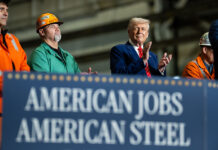No surprise here. The FT points out what most of the American public already knew. Years of low rates and trillions of dollars blown on quantitative easing did little for ordinary Americans. The biggest beneficiaries were the wealthiest 20% of the public. And among those it was the traders and speculators who benefited the most. Ultra-low interest rates have made a rough go of it for conservative investors and income investors.
Sadly, the populist backlash that Yellen & Co.’s regressive stimulus helped engineer may be more harmful for long-term economic growth than the recession the Fed was trying to cure.
One of the great ironies of the 10 years following the financial crisis is the way in which low interest rate monetary policy — which was designed to get Main Street USA back up and running and to help people buy homes and start businesses — has bolstered share prices and the markets more than it has helped ordinary Americans.
Low rates have facilitated record amounts of corporate debt issuance, and a lot of that debt has gone into share buybacks, which have peaked in the past couple of years after going up steadily since the crisis.
Buybacks bolster share prices, which in turn enrich the wealthiest 20 per cent of Americans who own 80 percent of all the shares.
Read more here.



